- Hidden Crosses at the Seljuk Castle near Ephesus
- Walking by Hidden Crosses in the Churches of Ephesus
- Finding the Hidden Savior on Mary’s Knee
The castle hill of Seljuk, Turkey, presents the remains of a 5th-century Byzantine church. A few hidden crosses exist for those who wander beyond the St. John Basilica Church. Let’s look at the hidden crosses at the Seljuk Castle.
The original building at the top of the Seljuk Castle site was neither Seljuk nor a castle but a Byzantine Basilica. When one sees the word “Basilica,” think of a royal-built assembly hall. Of,ten for the Byzantine period, this name represents churches. The remaining building on top of the highest hill on the west side of the town shows a Byzantine chapel that existed before Justinian commissioned St. John Basilica.
Presumably, the lack of building space and water on the hilltop encouraged Justinian to build below the royal Byzantine Basilica, which we know as St. Johns. He added cisterns to the area to supply the needs of the pilgrims. Still, this chapel remained to further one’s pilgrimage.
The Seljuks settled in the area, but the Ottomans built the walls and the mosque near the of top.[1]Mustafa Buyukkolanci. St. John: The Pilgirim [sic] Church of St. John and Ayasuluk Castle, Duru, 2011. However, when one enters the building, one will notice that the apse semi-circle resembles other churches in the area that face East.
Despite the Seljuk name, the Aydinogullari Emirate[2]One of the principalities established after the collapse of the Anatolian Seljuk State is the Aydınoğulları Principality. Aydınoğulları Principality (XIV. century) was found in Western Anatolia … Continue reading ruled in the late 14th century before they merged with the Ottomans. They used the area as a lookout castle, renovating the area, such as cisterns, but when they merged with the Ottomans, the walls and mosque were added.
The Ottoman used this present building as a cistern, so some of the inner lower walls display crumbling from this use. The Ottomans plastered the interior, but the three dug-out areas could have hosted the graves of believers from Byzantine times. If any crosses or other images existed in this building, past conquerors eliminated their presence. Yet, the Eastern apse implies the original religious purpose.
Building Remains
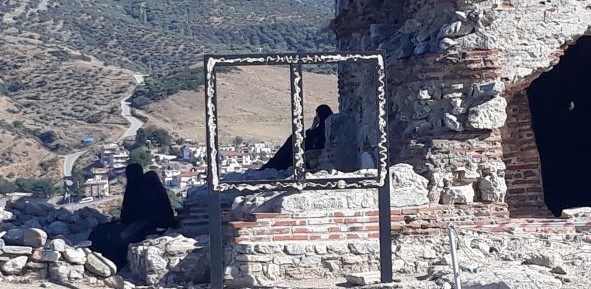
On our visit to the top of the hill, three Romanian nuns found a shaded spot to reflect and meditate near this ancient church. According to tradition, John the Apostle did the same thing.[3]Mustafa Buyukkolanci. St. John: The Pilgirim [sic] Church of St. John and Ayasuluk Castle, Duru, 54, 2011 They were spot on with how this hill can benefit our souls since the silence and view inspire. Also, the view west provides a glimpse of the Aegean Sea at the end of the valley that hosted the ancient harbor.
The area near the Basilica shows the nave, rectangle assembly location of the 6th-century place of worship. This area shows multiple building stones, two crosses, and three graves. The white limestone and marble display a semblance of past beauty.
Comparably when walking up into this area, notice the jade-like and marble walking stones, which reflect the meditative path that age-old believers traveled. The walkway reveals the care that went into the establishment of this site.

Archeology Remains
This hidden pillar off the beaten path lays out of view on the western end of the nave area. The picture above shows it on the far end of the Basilica. On the surface, a cross etched into a pillar that another tourist said looked like a “fish” encompassed the cross. I poured some water onto the surface to display the image better. The cross marks this pillar that once stood in the sanctuary.
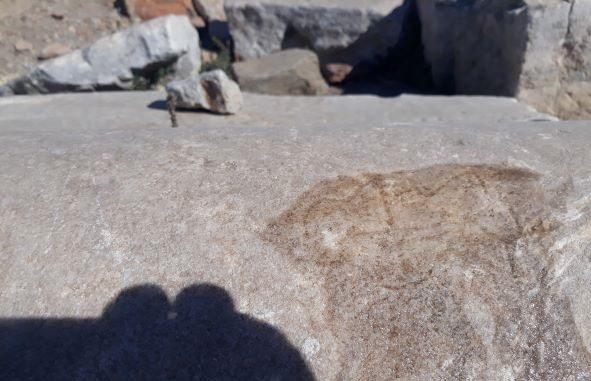
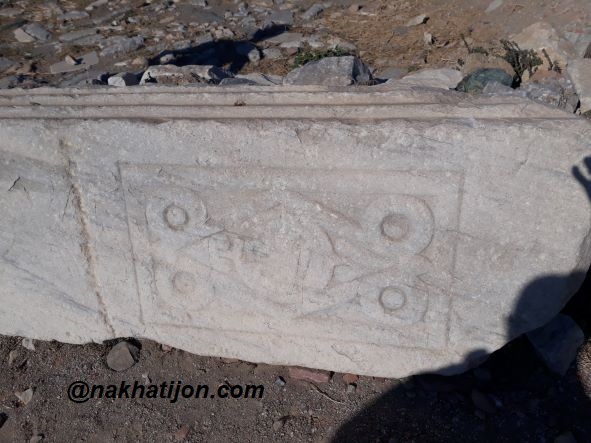
This panel lying in the courtyard near the entrance to the Basilica depicts what often happened to ancient crosses. The middle section, where the cross was carved, is now smeared by vandals warping the Christianity’s existence on this hilltop. This former wall or gravestone reveals one of the hidden crosses at the Seljuk Castle.
Taking the path down from the top, the Villa and Bath area on the right shows an old marble entrance. Near this entry lies this stone with a cross hidden by recent cement. Given these finds, there are likely other stones in the mounds of rocks at the top. However, these few crosses show the Byzantine use of the site. Historically, the area was a citadel castle, lookout, and cistern, but now these hidden crosses reveal a story not told.
As Ephesus moved into the area of modern Seljuk, so did the church. This Seljuk Castle Basilica shows the church’s influence before the 6th century in the area of Seljuk.
The Ephesus site was a key to the exaltation of the Virgin Mary.
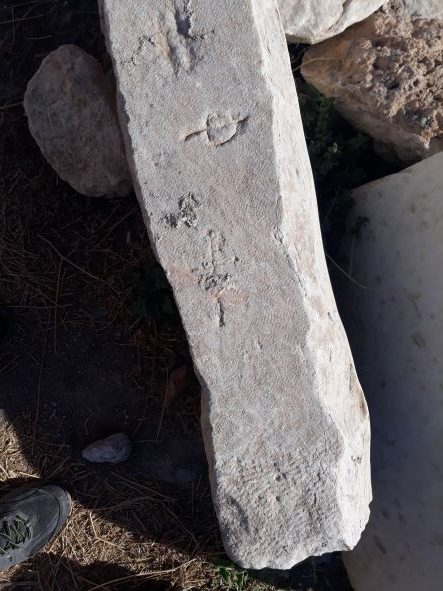
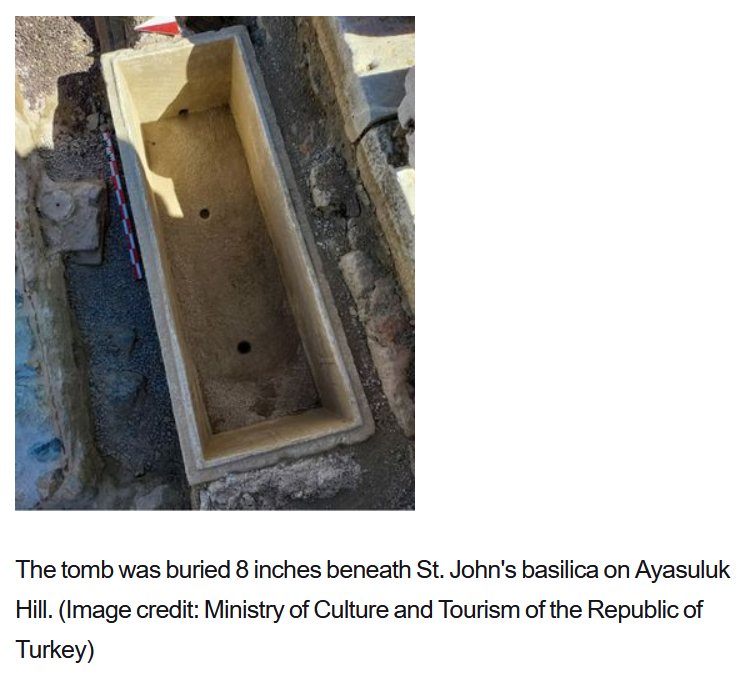
On this site, a grave marked for a gladiator had the remains of 12 other people in or near it.[4]https://www.livescience.com/archaeology/romans/grand-tomb-of-roman-gladiator-found-in-turkey-actually-contains-the-remains-of-12-other-people These graves, located west of the building, were marked off when I visited there. The marble sarcophagus had numerous crosses from the 5th and 8th centuries.
References
| ↑1 | Mustafa Buyukkolanci. St. John: The Pilgirim [sic] Church of St. John and Ayasuluk Castle, Duru, 2011. |
|---|---|
| ↑2 | One of the principalities established after the collapse of the Anatolian Seljuk State is the Aydınoğulları Principality. Aydınoğulları Principality (XIV. century) was found in Western Anatolia and played an important role in the Turkization and Islamization of the region. Translated from https://dergipark.org.tr/tr/pub/usad/issue/72146/1161287. |
| ↑3 | Mustafa Buyukkolanci. St. John: The Pilgirim [sic] Church of St. John and Ayasuluk Castle, Duru, 54, 2011 |
| ↑4 | https://www.livescience.com/archaeology/romans/grand-tomb-of-roman-gladiator-found-in-turkey-actually-contains-the-remains-of-12-other-people |
Leave a Reply